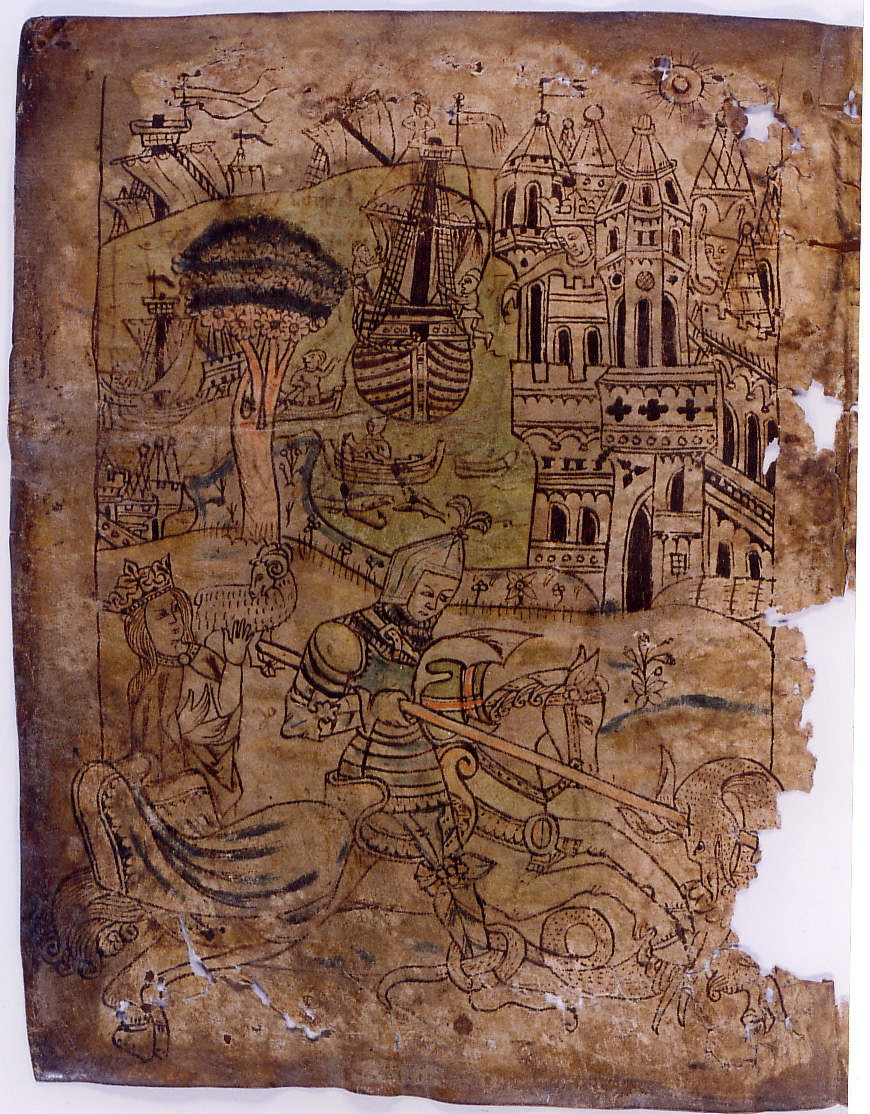TeiknibĂłk on:
[Wikipedia]
[Google]
[Amazon]
 ''TeiknibĂłk'' (
''TeiknibĂłk'' (
 ''TeiknibĂłk'' (
''TeiknibĂłk'' (ReykjavĂk
ReykjavĂk is the Capital city, capital and largest city in Iceland. It is located in southwestern Iceland on the southern shore of FaxaflĂłi, the FaxaflĂłi Bay. With a latitude of 64°08âČ N, the city is List of northernmost items, the worl ...
, Stofnun Ărna MagnĂșssonar, AM 673 a III 4to) is an Icelandic manuscript of drawings used as models for manuscript illumination, painting, carving and metalwork. It is remarkable for being one of only three dozen books of its type which survive from Western Europe and the only example extant from medieval Scandinavia
Scandinavia is a subregion#Europe, subregion of northern Europe, with strong historical, cultural, and linguistic ties between its constituent peoples. ''Scandinavia'' most commonly refers to Denmark, Norway, and Sweden. It can sometimes also ...
. The manuscript was produced over a period of over 150 years by four anonymous artists, beginning in around 1330. The illustrations in ''Teiknibók'' resemble those in '' KirkjubÊjarbók'', and it may have served as a model for them. In the words of the manuscript's most recent editor Guðbjörg Kristjånsdóttir, "The diverse subjects of the drawings prove that Icelandic art flourished to a far greater degree than surviving works of art would indicate."
History and description
The manuscript was given to Ărni MagnĂșsson along with two leaves from the '' Icelandic Physiologus'' dating to around 1200. The Ărni MagnĂșsson Institute in Iceland received the manuscript on 2 June 1991, which is in too poor a condition to be displayed permanently. 21 leaves and a fragment of the manuscript survive. The leaves measure between 170â180 mm by 127â135 mm. The condition of the manuscript is poor, affected by patches of rot and decay which has left holes in its pages. The illustrations themselves are faded and worn, and a number have been altered and others have been scribbled over. Four artists worked on the manuscript: Artist A (1330-1360) illustrated 15 sheets; Artist B (1360-1390) worked on 2 pages; Artist C (1450-1475) has left work on 22 pages; Artist D (c. 1500) is found on 8 pages. Battista suggests that the monastery atĂingeyrar
Ăingeyrar (ThingĂžre in some older texts) is a farm in Iceland's Northwestern Region. It lies adjacent to the sandy coastal plain of Ăingeyrasandur (or ThingĂžresand), between the Skagi and Vatnsnes peninsulas and just northeast of lake HĂłp. ...
is a likely source for the manuscript. Artist A also illuminated other Ăingeyrar manuscripts including AM 227 fol.
AM 227 fol. is a fourteenth century Icelandic illuminated manuscript. It contains a version of '' StjĂłrn'', an Old Norse biblical compilation, and is one of three independent witnesses to this work. It is lavishly illustrated and is one of the mo ...
( StjĂłrn). The iconographic imagery of TeiknibĂłk and the Ăingeyrar manuscripts AM 227 fol. and AM 249 e fol. shows influence from fourteenth century East Anglia
East Anglia is an area of the East of England, often defined as including the counties of Norfolk, Suffolk and Cambridgeshire, with parts of Essex sometimes also included.
The name derives from the Anglo-Saxon kingdom of the East Angles, ...
n manuscript illustration.
References
Further reading
* * {{Cite book, title=Church and Art: The Medieval Church in Norway and Iceland, last=KristjĂĄnsdĂłttir, first=GuĂ°björg, publisher=, year=1997, isbn=9789979900542, editor-last=ĂrnadĂłttir, editor-first=Lilja, location=ReykjavĂk, pages=97â98, chapter=Illuminations in Icelandic Medieval Manuscripts, editor-last2=Kiran, editor-first2=Ketil Icelandic manuscripts